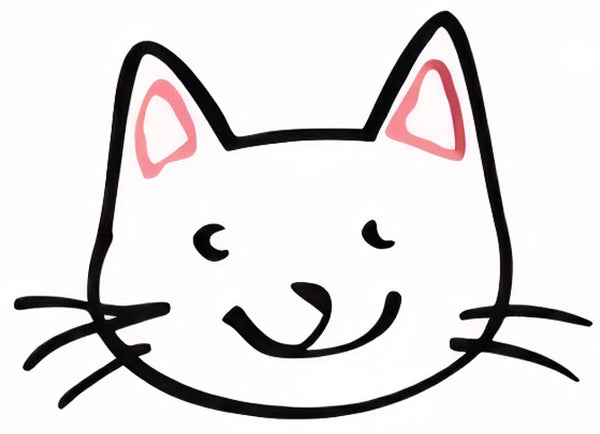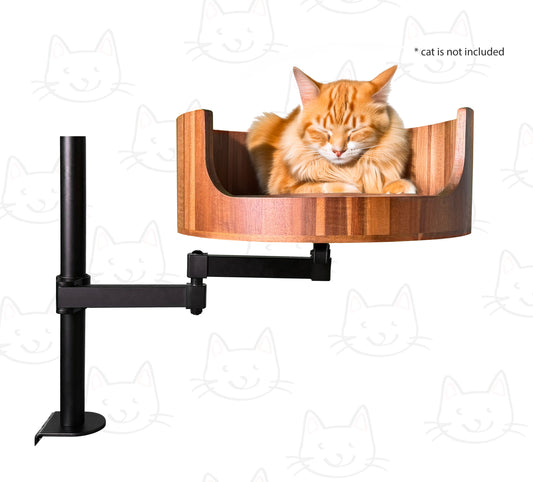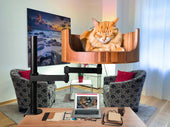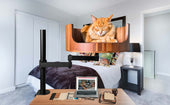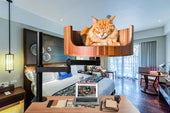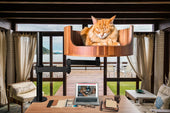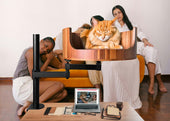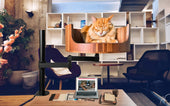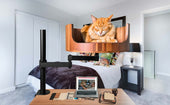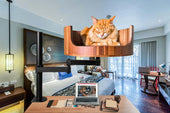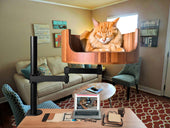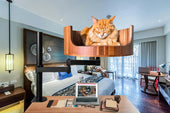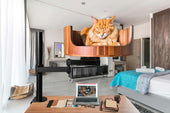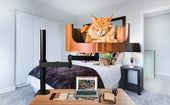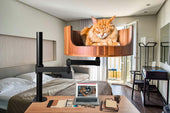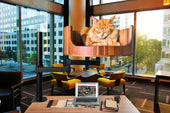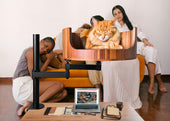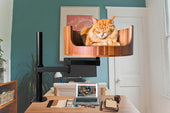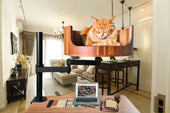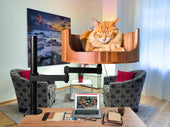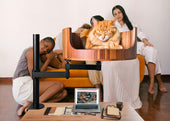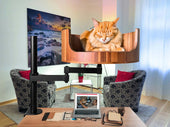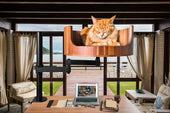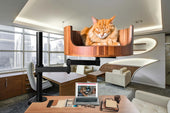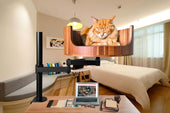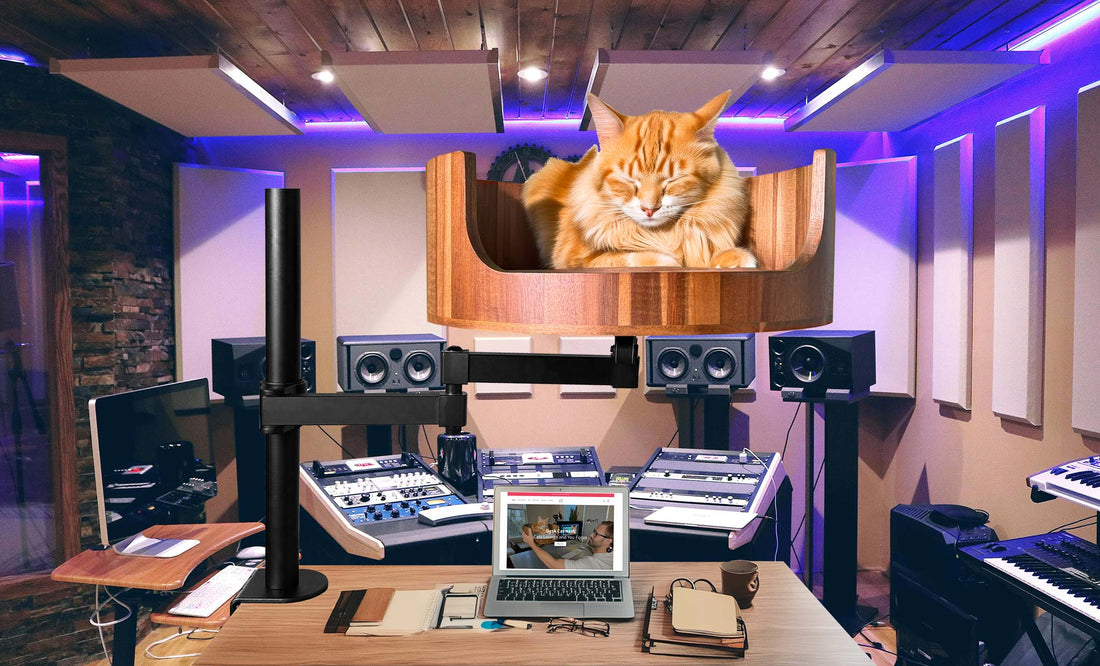
Yell at Cat: Understanding Feline Behavior and Communication
Share
Welcome to the wild world of feline behavior and communication! If you've ever found yourself shouting "Yell at Cat" in frustration with your furry friend, you're definitely not alone. Cats are mysterious creatures with their own unique ways of expressing themselves, and understanding their behavior can be a challenging yet rewarding experience. In this article, we will delve into the fascinating world of cat communication, decoding their body language, vocalizations, and emotional cues. Whether you're a seasoned cat owner or a newbie looking to better communicate with your feline companion, this guide will help you navigate the sometimes perplexing world of Desk Cat Nest and deepen the bond you share with your beloved pet.
From the subtle flick of a tail to the plaintive meow for attention, cats have a multitude of ways to communicate with us humans. By observing and interpreting these signals, we can better understand our cats' needs, desires, and moods. We will explore common feline behaviors such as kneading, purring, and rubbing against our legs, shedding light on the reasons behind these actions and what they mean in the grand scheme of cat communication. So, get ready to embark on a journey into the mind of your cat and discover the secrets behind their seemingly enigmatic behaviors.
1. Cats use a variety of vocalizations, body language, and behaviors to communicate with humans and other animals.
2. Yelling at a cat can be counterproductive as they do not respond well to loud noises or aggression.
3. Understanding a cat's specific behaviors and tail movements can help decipher their mood and intentions.
4. Creating a comfortable and safe space for your cat, like a designated desk cat nest, can improve their overall well-being.
5. Building a strong bond with your cat through positive interactions and proper communication is key to a happy and harmonious relationship.
Types of Vocalization in Cats
Cats communicate through a variety of vocalizations, each serving a different purpose depending on the situation. Common types of vocalizations include meowing, purring, hissing, growling, and yowling. For example, a short meow is often a way for a cat to greet their owner, while a long, drawn-out meow may indicate hunger or discomfort. Understanding the different vocalizations can help cat owners better interpret their cat's needs and emotions.
Body Language Signs in Cats
In addition to vocalizations, cats also communicate through their body language. Some common body language signs include tail position, ear position, eye dilation, and whisker position. For example, a cat with its tail held high and ears forward is often feeling relaxed and content, while a cat with dilated pupils and flattened ears may be feeling threatened or scared. By paying attention to these subtle cues, cat owners can better understand their cat's emotional state and respond accordingly.
Common Misconceptions About Yelling at Cats
Yelling at cats is a common behavior among cat owners, but it is often misunderstood. Many people believe that yelling at a cat will help discipline them or correct unwanted behavior. However, yelling can actually have the opposite effect, causing the cat to feel scared or anxious. Yelling can also damage the bond between the cat and their owner, leading to further behavioral issues. It is important for cat owners to find positive reinforcement techniques to address unwanted behavior rather than resorting to yelling.
Strategies for Effective Cat Communication
To effectively communicate with their cats, owners should focus on positive reinforcement, using rewards and praise to encourage desired behavior. It is also important to be patient and consistent in training, as cats may take longer to learn new behaviors compared to dogs. Additionally, providing environmental enrichment, such as interactive toys and scratching posts, can help reduce stress and prevent destructive behavior. By using these strategies, cat owners can improve their relationship with their feline companions and create a harmonious living environment.
FAQ
How will the Desk Cat Nest help prevent me from yelling at my cat?
The Desk Cat Nest provides a cozy and secluded space for your cat to retreat to when they need some alone time. This can help reduce instances of frustration or irritation that may lead to yelling.
Will my cat actually use the Desk Cat Nest?
While every cat is different, most cats enjoy having a designated space to call their own. The Desk Cat Nest provides a comfortable and safe environment for your cat to relax in, making it more likely that they will use it regularly.
Is the Desk Cat Nest easy to clean?
Yes, the Desk Cat Nest is made of washable materials that can easily be wiped down or thrown in the washing machine for a thorough cleaning. This ensures that your cat's nesting area stays clean and fresh.
Can the Desk Cat Nest be used for multiple cats?
Yes, the Desk Cat Nest can accommodate multiple cats depending on their size and comfort level with sharing space. However, it's always a good idea to monitor their interactions to ensure they are comfortable with the arrangement.
Will the Desk Cat Nest fit on my desk?
The Desk Cat Nest is designed to fit on most standard-sized desks, providing a cozy spot for your cat while you work. However, it's important to measure your desk space before purchasing to ensure a proper fit.
In conclusion, the Desk Cat Bed is a valuable choice for cat owners looking to prevent their furry friends from disrupting their work or study time. By providing a comfortable and secure resting spot right next to you on your desk, this innovative product helps minimize distractions and promotes a harmonious work environment. With features like machine washable material and a sturdy construction, the Desk Cat Bed offers durability and convenience for both cats and their owners. Say goodbye to yelling at your cat and hello to the perfect solution with the Desk Cat Bed.
